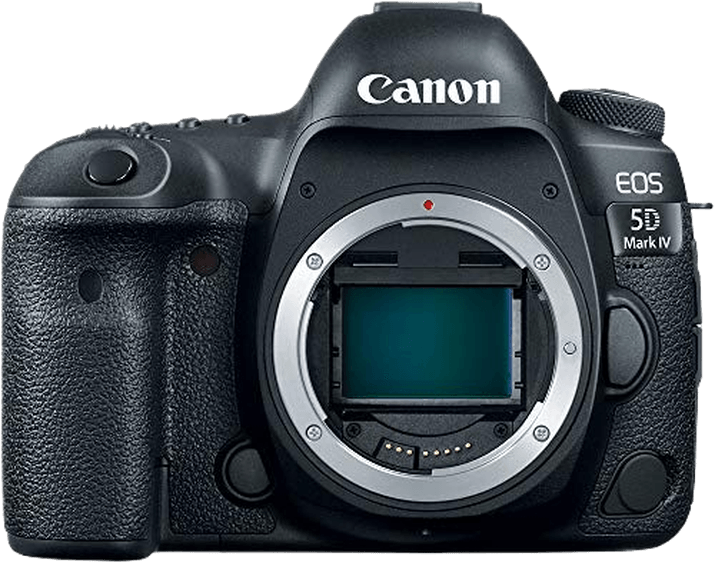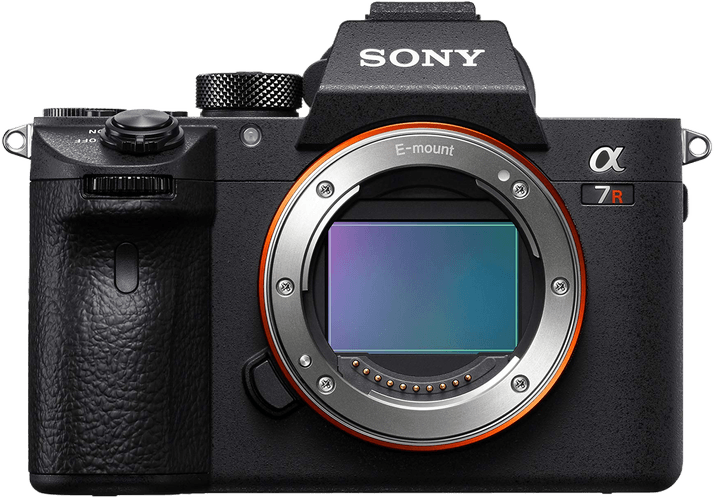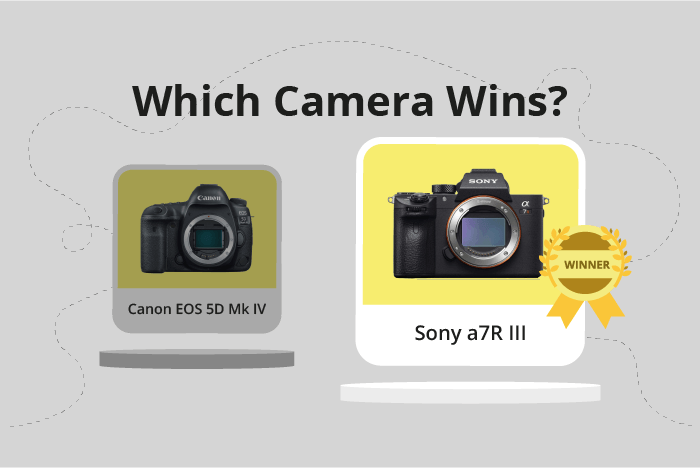Canon EOS 5D Mark IV vs Sony a7R III Comparison
Canon EOS 5D Mark IV

Sony a7R III

The Sony a7R III emerges as the winner with a score of 83/100, while the Canon EOS 5D Mark IV trails behind with a score of 75/100. Both cameras share similarities in their release years, 2016 for Canon and 2017 for Sony, and launch prices, $3500 for Canon and $3200 for Sony.
The Sony a7R III outperforms the Canon EOS 5D Mark IV with its lighter weight of 657g and smaller size of 127 x 96 x 74mm. Additionally, the Sony camera is a mirrorless type, offering advantages in portability and modern technology.
However, the Canon EOS 5D Mark IV is a DSLR, which some photographers may prefer for its optical viewfinder and longer battery life. The camera’s weight of 890g and size of 151 x 116 x 76mm make it more substantial and sturdy in hand.
In the end, the Sony a7R III excels in portability and modern features, while the Canon EOS 5D Mark IV offers a more traditional DSLR experience.
Canon EOS 5D Mark IV vs Sony a7R III Overview and Optics
The Sony a7R III outperforms the Canon EOS 5D Mark IV in optics, with a score of 84/100 compared to the Canon’s 76/100. Both cameras share some common specifications, such as a CMOS sensor, full-frame sensor size, and their respective lens mounts, Canon EF for the 5D Mark IV and Sony FE for the a7R III.
The Sony a7R III has a higher megapixel count at 42.4, allowing for more detailed images, while the Canon EOS 5D Mark IV has a lower count of 30.4. The a7R III also has a faster shooting speed of 10 frames per second compared to the 5D Mark IV’s 7 frames per second. The DXOMARK score for the Sony a7R III’s sensor is 100, which is higher than the Canon 5D Mark IV’s score of 91. Additionally, the a7R III has image stabilization, which the 5D Mark IV lacks. These advantages make the Sony a7R III a better option for those who prioritize image quality and stability.
However, the Canon EOS 5D Mark IV has its strengths, such as the Digic 6+ processor, which provides efficient performance and image processing, while the Sony a7R III uses the Bionz X processor. The Canon’s EF lens mount offers a wider selection of lenses compared to the Sony’s FE mount, which can be beneficial for photographers who already have a collection of Canon lenses or need specific lenses for their work.
Taking these factors into account, the Sony a7R III offers better image quality and stability due to its higher megapixel count, faster shooting speed, better sensor score, and image stabilization. The Canon EOS 5D Mark IV, on the other hand, provides efficient performance with its processor and a wider lens selection. Ultimately, the choice between these cameras depends on the specific needs and preferences of the photographer.
Canon EOS 5D Mark IV vs Sony a7R III Video Performance
The Canon EOS 5D Mark IV outperforms the Sony a7R III in video capabilities, with a video score of 91/100 compared to the Sony’s 56/100. Both cameras share the feature of 4K video resolution, but the Canon 5D Mark IV has a higher maximum video dimension of 4096 x 2160, while the Sony a7R III offers 3840 x 2160.
One significant advantage of the Canon 5D Mark IV is its higher maximum video frame rate of 120fps, compared to the Sony a7R III’s 30fps. This allows the Canon camera to capture smoother and more detailed slow-motion footage, providing more creative options for videographers. Additionally, the Canon 5D Mark IV has built-in time-lapse functionality, which the Sony a7R III lacks. This feature enables users to create stunning time-lapse videos without needing additional equipment or software.
While the Sony a7R III has a lower video score, it still offers 4K video resolution, which is a strong feature for those interested in capturing high-quality footage. However, its lower maximum video frame rate and lack of built-in time-lapse functionality make it less versatile than the Canon 5D Mark IV.
Considering the higher video score, larger maximum video dimensions, faster maximum video frame rate, and built-in time-lapse functionality, the Canon EOS 5D Mark IV is the superior camera for videography. The Sony a7R III remains a suitable choice for those primarily interested in 4K video resolution, but it falls behind the Canon 5D Mark IV in overall video capabilities.
Canon EOS 5D Mark IV vs Sony a7R III Features and Benefits
The Sony a7R III outperforms the Canon EOS 5D Mark IV in the features category, scoring 83 out of 100 points compared to the Canon’s 74 points. Both cameras share some common specifications, such as touchscreen functionality and WiFi capabilities. However, there are notable differences that set the two cameras apart.
The Sony a7R III surpasses the Canon EOS 5D Mark IV with its flip screen and Bluetooth connectivity. The flip screen provides flexibility for shooting at various angles, making it a more versatile option. Additionally, Bluetooth allows for seamless connectivity with other devices, further enhancing the user experience.
On the other hand, the Canon EOS 5D Mark IV has a larger screen size and a higher screen resolution than the Sony a7R III. The 3.2-inch screen with a resolution of 1,620,000 dots provides a clearer and more detailed display for users. Moreover, the Canon EOS 5D Mark IV features GPS functionality, which the Sony a7R III lacks. This allows users to geotag their images, a useful feature for travel and landscape photographers.
Taking these points into consideration, it is evident that the Sony a7R III’s flip screen and Bluetooth connectivity make it the better choice in terms of features. However, the Canon EOS 5D Mark IV’s larger screen size, higher screen resolution, and GPS functionality should not be overlooked, as these features might be more important to certain users. Ultimately, the choice between the two cameras will depend on the individual’s priorities and preferences.
Canon EOS 5D Mark IV vs Sony a7R III Storage and Battery
The Canon EOS 5D Mark IV outperforms the Sony a7R III in storage and battery, scoring 71/100 compared to Sony’s 65/100. Both cameras have two memory card slots, but the Canon accepts SD/SDHC/SDXC (UHS-I compatible) and Compact Flash cards, while the Sony is compatible with SD/SDHC/SDXC (UHS-II compatible) cards only.
Canon’s advantage lies in its longer battery life, offering 900 shots per charge with its LP-E6N battery, compared to Sony’s 650 shots using the NP-FZ100 battery. However, neither camera supports USB charging.
Despite its lower score, the Sony a7R III’s UHS-II compatibility allows for faster read and write speeds, which could be beneficial for some users.
In terms of storage and battery, the Canon EOS 5D Mark IV proves to be the superior choice due to its longer battery life and additional memory card compatibility. The Sony a7R III, while inferior in these aspects, still offers a notable advantage with its UHS-II compatibility for faster data transfer.
Canon EOS 5D Mark IV vs Sony a7R III – Our Verdict
Are you still undecided about which camera is right for you? Have a look at these popular comparisons that feature the Canon EOS 5D Mark IV or the Sony a7R III:

